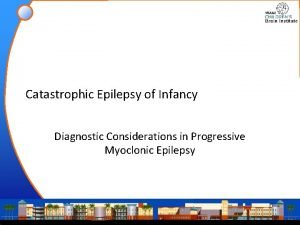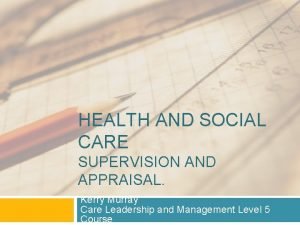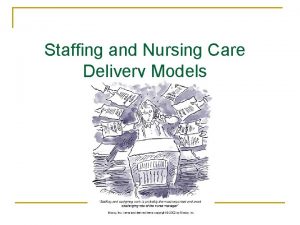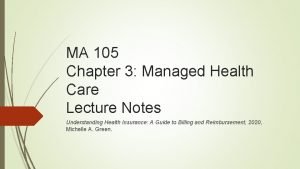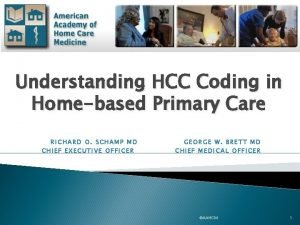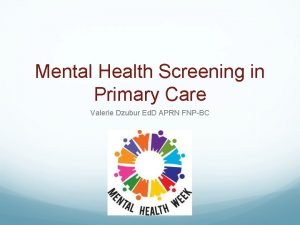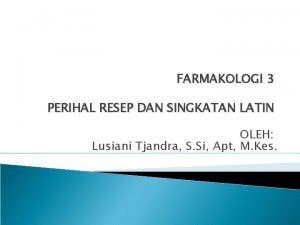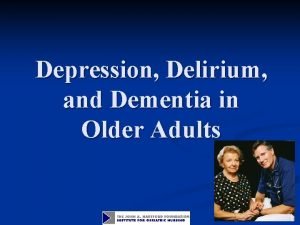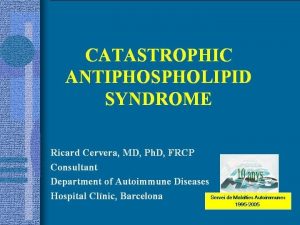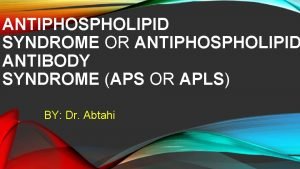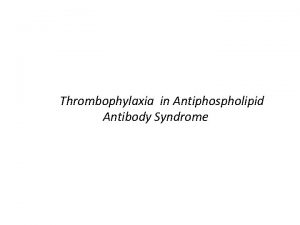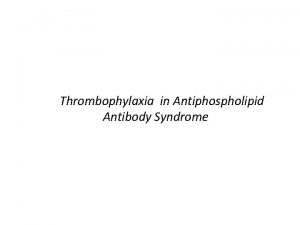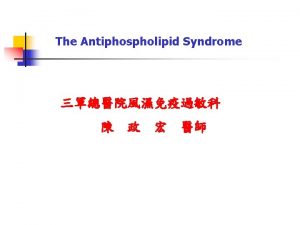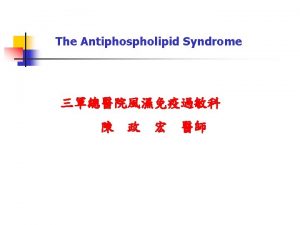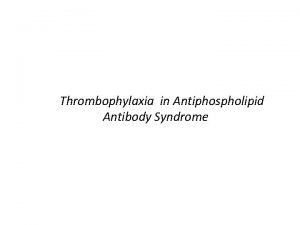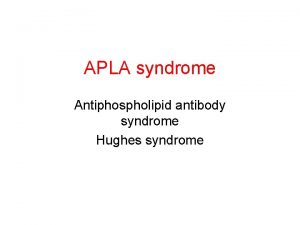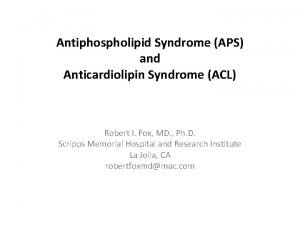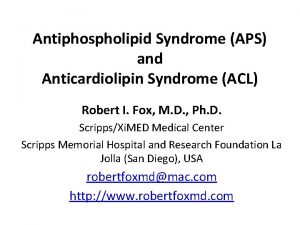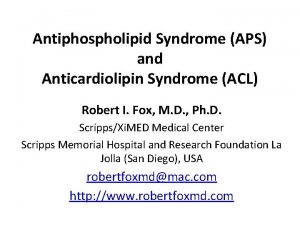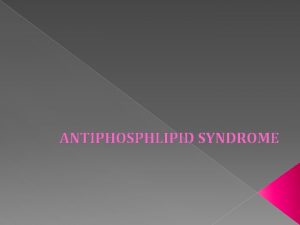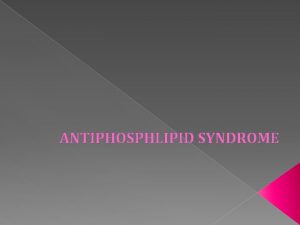Catastrophic Antiphospholipid Syndrome CAPS and Models of Care


























- Slides: 26

Catastrophic Antiphospholipid Syndrome (CAPS) and Models of Care for Hemophilia Clinical Practice Guidelines: lessons learnt Dr. Alfonso Iorio, MD, Ph. D, FRCPC Health Information Research Unit Clinical Epidemiology and Biostatistics Mc. Master University

The RARE-Bestpractices CPG Project work unit • Objectives: • To define methodological quality standards for BP guidelines in Rare Disease • To pilot test the proposed methods on two guideline for specific rare conditions (CAPS, SCD) • Deliverables: • Methods document • Pai M paper • NHF-Mc. Master CPG methods • Pilot BP guidelines

Guideline development for rare diseases

Why a guideline for CAPS diagnosis and treatment? • CAPS is a very rare disorder • incidence rates have not been published; it is thought to represent <1% of APS patients • CAPS is life-threatening disorder • with available treatment options • Current level of evidence in CAPS reflective of most rare diseases

Hemophilia management is complex hematologist physiotherapist hemophilia nurse arthopathy hemophilia-specific orthopaedic specialists treatment and musculoskeletal health general practitioner management plans non hemophiliarelated chronic hepatitis C complications infectious disease person with hemophilia dentition-related complications dentist specialists HIV infection psychosocial support vocational challenges psychologist social stigma limitations on their activities social worker decreased quality of life and life satisfaction

Evidence synthesis: Retrieved articles for therapy questions 671 abstracts 632 records excluded 39 articles for full-text screening 32 records excluded 8 articles included

Evidence synthesis: retrieved articles for diagnosis questions 519 abstracts 498 records excluded *Cervera 2005 - Validation of the preliminary criteria for the classification of catastrophic antiphospholipid syndrome 21 articles for full-text screening 20 records excluded *CAPS-Registry 1 article included

High quality evidence on hemophilia was scarce… 6795 articles screened 50 original studies included NO systematic reviews! NO randomized trials! 7 non-rnd comparative studies 19 non-rnd, non-comparative studies 24 “narrative” papers

Challenges and solutions • Paucity of evidence • Lack of critical appraisal skills • Lack of dedicated methodology Indirect evidence Standardized expert opinion Ad hoc qualitative study Direct use of registry data CAPS Haemophilia �� �� ��

Challenges and solutions • Paucity of evidence • Lack of critical appraisal skills • Lack of dedicated methodology Indirect evidence Standardized expert opinion Ad hoc qualitative study Direct use of registry data CAPS Haemophilia �� �� ��

Proposed methodology

Filling in the Gaps: finding appropriate diseases • Parallel systematic searches of other chronic diseases were also conducted (congestive heart failure, chronic obstructive pulmonary disease, asthma, diabetes) • Like hemophilia, these diseases… • • Are chronic Are high resource users Affect individuals over the life span (for asthma and diabetes) Deliver care via well established multidisciplinary integrated models • Assessment of directness was performed by the panel on • Population • Interventon • Outcome • Without knowledge of the evidence synthesis results

Evidence review The effect size for the impact of the integrated model of care was a composite of the one from this review of RCTs and comparative observational trials in hemophilia

Challenges and solutions • Paucity of evidence • Lack of critical appraisal skills • Lack of dedicated methodology Indirect evidence Standardized expert opinion Ad hoc qualitative study Direct use of registry data CAPS Haemophilia �� �� ��

Systematic Observations Population (n=55) • • • Intervention • • Mainly Caucasian middle aged women (approx. 60%) and men, range 20 to 50 years old (with few patients 5 to 13 years old, and up to 75 years old) SLE (approx. 45%) and primary APS (approx. 45%) One report with lungs, brain, and kidney were organs most frequently affected All patients received plasma exchange (with the exception of n=3 (5. 5%) patients) Plasma exchange was first line for almost all patients, approx. n=15 (27%) second line (e. g. , when anticoagulation and corticosteroids do not control the disease) Type of treatment dependent on severity, response to first line treatment, presence of SLE, etc. Examples of treatment combinations included: o Plasma exchange + IVIG (70% of patients) + anticoagulation + corticosteroids + cyclophosphamide (20% of SLE patients) o Plasma exchange + anticoagulation + IVIG o Plasma exchange + anticoagulation + corticosteroid + cyclophosphamide (30% of patients)

Systematic Observations Outcome Large or moderate benefit Small benefit No effect Small harm Large or moderate harm No info on this outcome 1. Death 6 (n=45) 1 (n=1) 1 (n=4) 3 2. Permanent organ dysfunction (dialysis, lung disease) 4 (n=24) 2 (n=20) 3 (n=6) 3 3. Permanent neurologic deficit (stroke, dementia) 3 (n=13) 2 (n=16) 3 (n=12) 5 4. Complete recovery (absence of 2 or 3) 4 (n=28) 2 (n=10) 4 (n=17) 2 5. Major bleeding (per ISTH criteria) 3 (n=13) 6 (n=37) 3 6. Amputation (digit, extremity) 2 (n=11) 2 (n=20) 2 (n=3) 6 7. Thrombosis/ thrombotic event 3 (n=30) 2 (n=12) 3 (n=8) 3

Challenges and solutions • Paucity of evidence • Lack of critical appraisal skills • Lack of dedicated methodology Indirect evidence Standardized expert opinion Ad hoc qualitative study Direct use of registry data CAPS Haemophilia �� �� ��

Conducting qualitative interviews with key stakeholders

Challenges and solutions • Paucity of evidence • Lack of critical appraisal skills • Lack of dedicated methodology Indirect evidence Standardized expert opinion Ad hoc qualitative study Direct use of registry data CAPS Haemophilia �� �� ��

Systematic review results Should TPE be used as first-line therapy for CAPS? Outcome, Number of studies n - TPE n - No TPE Relative effect (95% CI) Absolute effect (95% CI) Death n=6 34/112 (30. 4%) 97/229 (42. 4%) OR 0. 68 (0. 411. 12) 90 fewer per 1000 (28 Very low more to 192 fewer) 5/7 6/17 (35. 3%) (71. 4%) OR 5. 01 (0. 72 -34. 75) 379 more per 1000 Very low (71 fewer to 597 more) 1/7 (14. 3%) OR 8. 00 (0. 25 -255. 75) 275 more per 1000 Very low (43 fewer to 882 more) Permanent organ dysfunction n=2 Permanent neurologic dysfunction n=2 Complete recovery n=2 1/17 (5. 9%) 2/7 9/17 (52. 9%) (28. 6%) OR 0. 27 (0. 04 -1. 85) 296 fewer per 1000 (146 more to 486 fewer) Quality Very low

Supplementary Data from the CAPS Registry • Of patients receiving PLEX (n=169), 60 died • Of patients not receiving PLEX (n=318), 122 died • OR for mortality = 0. 88 [95% CI 0. 60, 1. 30]

Bottom line? • Panel participation? • Panel satisfaction with the process? • Quality of end product

Recommendations Hemophilia CAPS 1 Conditional; moderate 1 conditional for / very low 1 b Strong; moderate 2 strong for /very low 2 Conditional; very low 3 conditional against / very low 4 conditional for / very low 5 conditional for / very low 6 conditional against / very low 7 a 7 b conditional for / very low Strong for / very low 8 conditional for / very low 9 neutral / very low 10 conditional for / very low

Conclusions • EBG can be issued in the field of rare disease without necessarily ending in a crowd of weak recommendation and very low quality evidence • Involvement of panel expert very critical • Don’t stop at published RCT-based evidence • GRADE can support the process

CAPS - Panel Dr. Ricard Cervera (Barcelona) Dr. Ignasi Rodriguez Pinto (Barcelona) Dr. Gerard Espinosa (Barcelona) Dr. Munther Khamashta (London, UK) Dr. Francesco Dentali (Insubria, Italy) Dr. Vittorio Pengo (Padua, Italy) Dr. Doruk Erkan (New York) Dr. Jacob Rand (New York) Dr. Sarah O'Brien (Columbus, Ohio) Dr. Marc Carrier (Ottawa, Canada) Dr. Mark Crowther (Hamilton, Canada) Dr. Karen Moffat (Hamilton, Canada) Dr. Holger Schunemann (Hamilton, Canada) Dr. Alfonso Iorio (Hamilton, Canada) Dr. Chris Hillis (Hamilton, Canada) Dr. Kim Legault (Hamilton, Canada) Dr. Thomas Sejersen (Stockholm) Dr. Joerg Meerpohl (Freiberg) Dr. Domenica Taruscio (Rome) Dr. Elie Akl (Beirut) Ms. Lisa Thom (Patient representative) Panel Observers Cristina Morciano (Rome) Paolo Laricchiuta (Rome) Cindy Yeung (Hamilton, Canada) Panel Steering Committee Dr. Holger Schunemann (Hamilton, Canada) Dr. Mark Crowther (Hamilton, Canada) Dr. Alfonso Iorio (Hamilton, Canada) Dr. Chris Hillis (Hamilton, Canada) Dr. Kim Legault (Hamilton, Canada)

Hemophilia panel Mark Skinner Ellen Riker Marla Feinstein Guideline panel members Kari Atkinson Marianne Clancy Randall Curtis Sue Geraghty Alfonso Iorio Craig Kessler Nigel Key Kristy Lee Jeanne Lusher Mike Makris Maria Martins-Lopes Ruth Mulvany Holger Schünemann Michelle Sholzberg Mark Skinner Mike Soucie Doug Stratton Vicky Whittemore Menaka Pai Shannon Lane Tamara Ruan-Navarro Nancy Santesso Alfonso Iorio Holger Schünemann
 Ana antiphospholipid syndrome
Ana antiphospholipid syndrome Catastrophic risk protection endorsement
Catastrophic risk protection endorsement Catastrophic event
Catastrophic event What are some types of catastrophic events
What are some types of catastrophic events Catastrophic epilepsy infancy
Catastrophic epilepsy infancy Facilitative emotions definition
Facilitative emotions definition Health care levels primary secondary tertiary
Health care levels primary secondary tertiary Semi modals
Semi modals Appraisal in health and social care
Appraisal in health and social care What is modular nursing
What is modular nursing Staffing and nursing care delivery models
Staffing and nursing care delivery models Vaulation
Vaulation Caps floors and collars examples
Caps floors and collars examples Radical days of the revolution
Radical days of the revolution Managed care is categorized according to six models
Managed care is categorized according to six models Care coordination models
Care coordination models O que é caps
O que é caps Sig e caps
Sig e caps I.m.m artinya resep
I.m.m artinya resep Sig e caps
Sig e caps Hod management plan
Hod management plan Types of scales in maths lit
Types of scales in maths lit Sigecaps
Sigecaps Fiu caps
Fiu caps Pim pada resep dokter adalah singkatan dari
Pim pada resep dokter adalah singkatan dari Sigecaps
Sigecaps Caps document intermediate phase
Caps document intermediate phase




